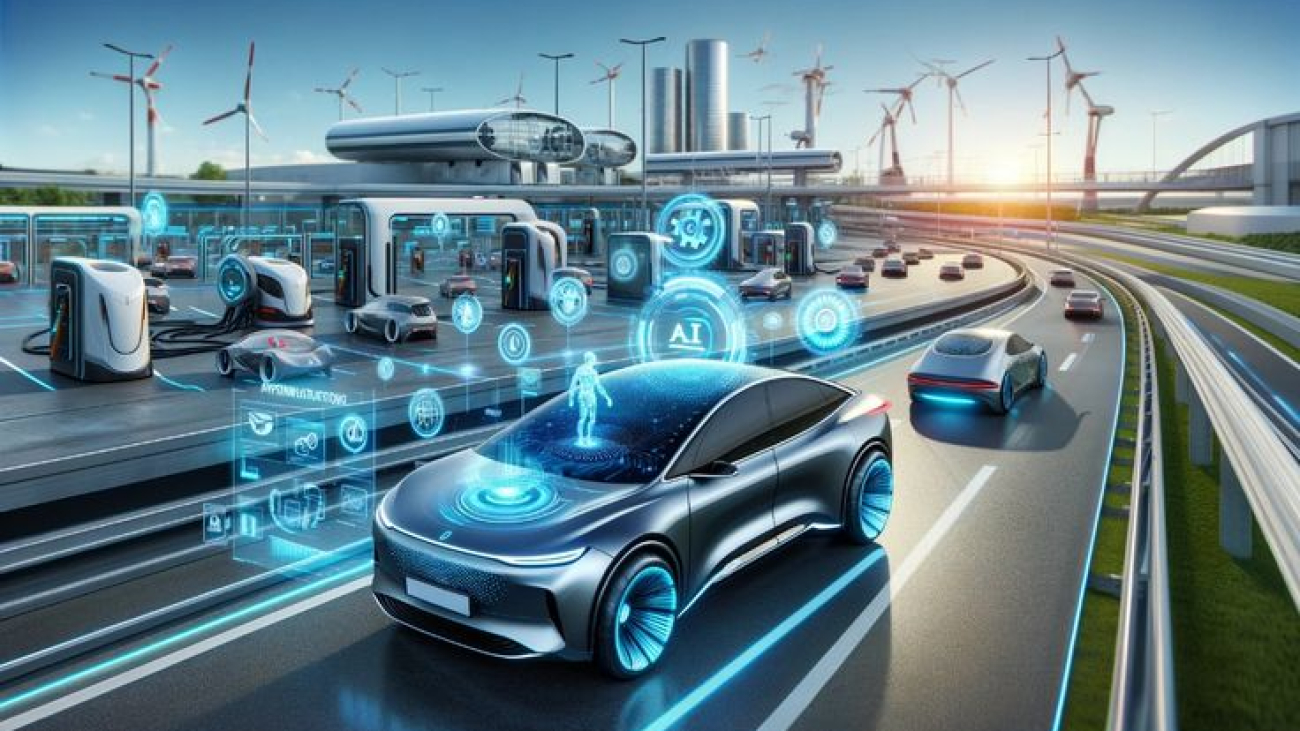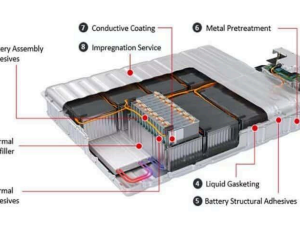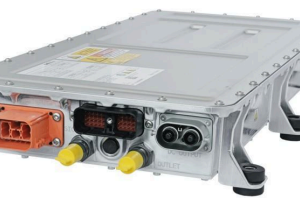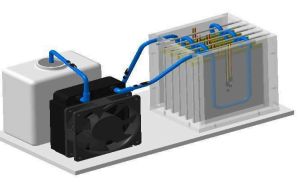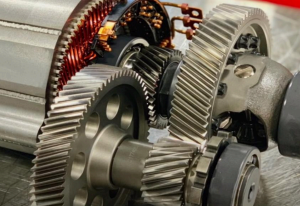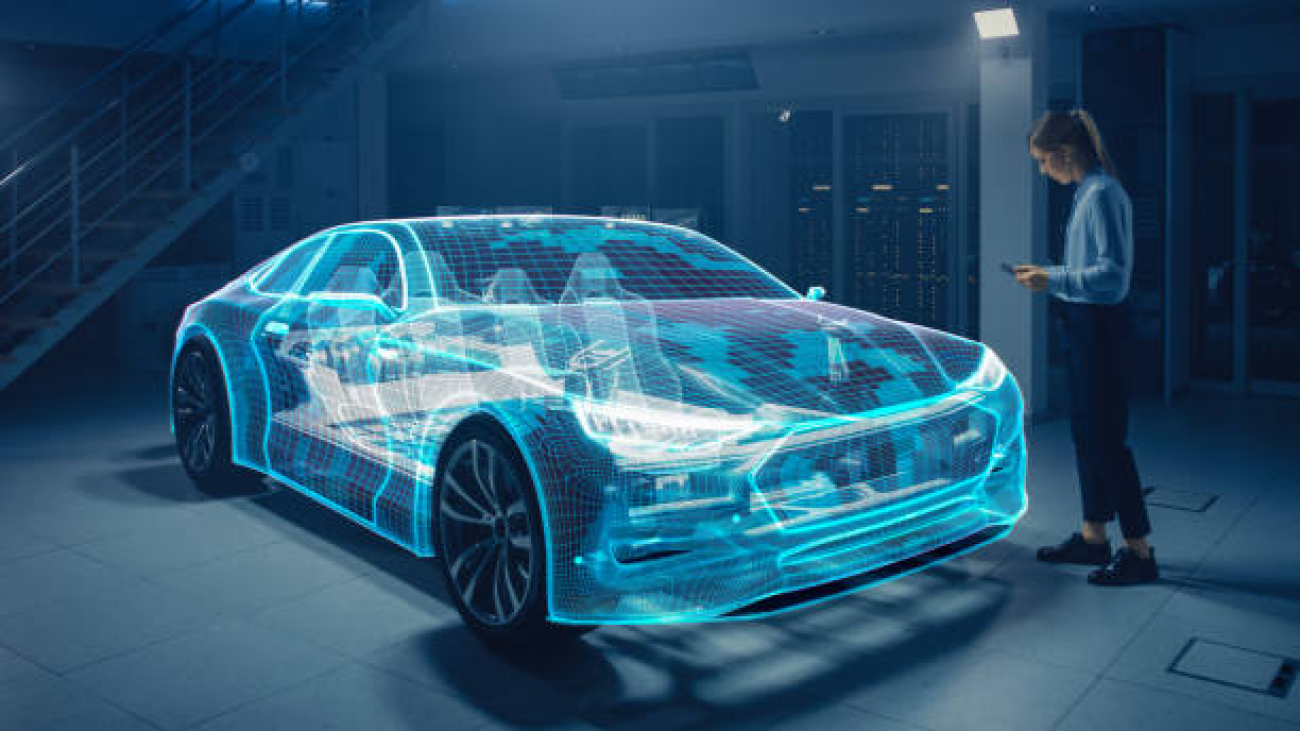⚡ Introduction
An electric vehicle (EV) is a car that runs entirely or primarily on electricity. EVs can be found in automobiles, trains, trams, boats, and even airplanes. EVs were first popularized during the Second Industrial Revolution in the late 19th century due to their user-friendliness and silence. But their broad usage was hindered by their limited battery storage, and the 20th century was dominated by internal combustion engines. Electric propulsion was nevertheless widely used in trains and public transportation in spite of this. Significant developments in motors, batteries, and electronics allowed for the start of mass production of plug-in hybrids and battery electric vehicles (BEVs) in the late 2000s. By the 2010s, EVs were more economical and useful. Many nations provide incentives to encourage the use of electric vehicles (EVs), which are now a crucial component of sustainable transportation.
Figure: Image 1
⚙️ How Does an Electric Vehicle (EV) Work?
An electric vehicle (EV) is powered by a huge battery pack and an electric motor rather than a traditional internal combustion engine. These batteries, often lithium-ion, store the electrical energy that drives the car’s motor. An EV may have one or more battery units, depending on the model.
An electric vehicle (EV) is propelled by an electric motor powered by a massive battery pack rather than a conventional internal combustion engine. These batteries, which are often lithium-ion, store the electrical energy that drives the motor and moves the vehicle forward. Depending on the model, an electric vehicle may have one or more battery units.
Figure: Image 2
An integral part of electric vehicles is regenerative braking. When a driver applies the brake or depresses the accelerator, the car’s kinetic energy is converted back into electrical energy. It then returns this energy to the battery to improve driving efficiency and range.
Main Components of an Electric Vehicle (EV)
An electric vehicle (EV) is constructed from a number of fundamental parts that cooperate to guarantee safe operation, energy efficiency, and seamless performance. In order to supply power, control energy flow, and enhance the overall driving experience, each component is essential. Anyone hoping to work in the expanding EV business, including technicians and students, must comprehend these essential elements.
Battery Pack: The primary energy storage device is a battery pack, which is made up of several separate battery cells (often lithium-ion) coupled to one another to supply the necessary voltage and
capacity to run the car’s electric motor. The entire battery pack is made up of these cells, which are frequently arranged into modules and enclosed in a protective shell.
Figure: Image 3
Electric Motor: Electric motors provide the force that propels the wheels by converting electrical energy into mechanical energy. In essence, they take the place of the internal combustion engine present in conventional gasoline-powered automobiles as the EV’s engine. The rotational force required to move the vehicle is produced by these motors using electrical power from the battery pack.

Figure: Image 4
Inverter: The inverter is a crucial electrical component that transforms battery-derived direct current (DC) power into alternating current (AC) power, which powers the electric motor. It also converts AC power back into DC to replenish the battery, which is essential for regenerative braking.
Figure: Image 5
Charging Port: The actual connecting point that enables the car to get electricity from an outside power source to replenish its battery is called the charging port. In essence, it’s the “plug-in” location where the automobile and charging cable from a station are connected.

Figure: Image 6 Figure: Image 7
Thermal Management System: In order to maintain optimum performance, efficiency, and longevity, an electric vehicle’s (EV) Thermal Management System (TMS) regulates the temperature of multiple parts, including the battery, motor, and power electronics. To keep passengers comfortable, it also cooperates with the cabin climate control system.
Figure: Image 8
Transmission (Single-speed): Unlike conventional automobiles, which have several gears, electric vehicles (EVs) only have a single gear ratio between the electric motor and the wheels when they have a single-speed transmission. This has several benefits and streamlines the drivetrain.
Figure: Image 9
Regenerative Braking System: The kinetic energy that is often lost during braking is captured and repurposed by this device. Regenerative braking uses the electric motor as a generator to transform the vehicle’s motion into electricity, which is then returned to the battery for future use, as opposed to standard brakes that use friction to turn this energy into heat. This procedure can increase the EV’s driving range and improve overall efficiency.
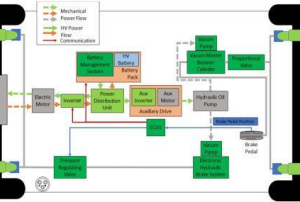
Figure: Image 10
Opportunities for Diploma Students: As the global and Bangladeshi transportation industries transition to electric mobility, the demand for trained EV technicians and professionals grows significantly. Those with diplomas in mechanical, electrical, electronic, and automotive engineering are well-positioned to benefit from this expanding industry. A few noteworthy industries are as follows:
- EV Technician / Service Engineer: Working with electric vehicles, motors, and batteries, an EV technician or service engineer performs diagnostics, repairs, and maintenance. ● Battery Technician: Manage Battery Management Systems (BMS) and assemble and repair lithium-ion batteries.
- EV Conversion Specialist: Transform gasoline and diesel cars into electric ones. This is a rapidly expanding industry.
- Employment Opportunities Abroad: Diploma EV technicians are being sought after by nations like as Japan, Korea, the Middle East, and Europe.
- Higher Education: Possibilities in Renewable Energy, EV Technology, or EV certifications (e.g., Tesla, Bosch).
- Jobs in EV Manufacturing Plants: Positions in Tesla, Tata, Walton, Runner, and other companies that involve assembly, quality control, and wiring
Conclusion
Electric cars, or EVs, are a revolution in motion as the world moves toward a cleaner, smarter future. This change gives diploma students access to fascinating, in-demand jobs that combine creativity, sustainability, and technology, particularly in the automotive, electrical, and mechanical engineering sectors. Your path in this field can drive significant change, from creating and sustaining EVs to making the world a greener place.
Therefore, sharpen your talents, maintain your curiosity, and prepare to be a part of the transportation of the future since the possibilities in the field of electric vehicles are endless.
✍️ Written By Md. Mahamud Hasan
Jr. Instructor Automobile
Daffodil Institute of Engineering and Technology

